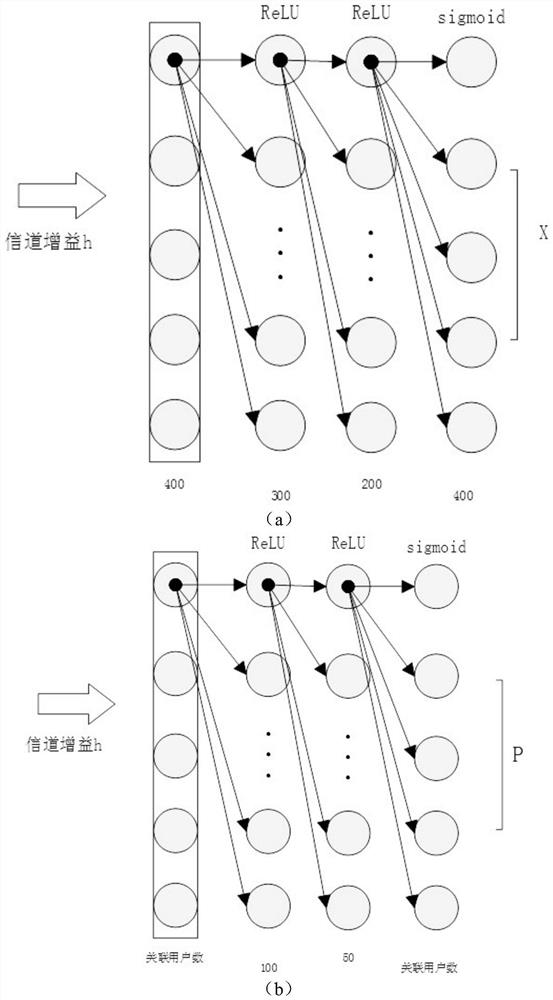User association joint power distribution strategy based on deep learning in heterogeneous network
A joint power allocation and heterogeneous network technology, applied in the field of user-associated joint power allocation strategy, can solve problems such as unavailable real-time decision-making, limited number of macro base stations, high computational complexity, etc., achieve real-time reliable online decision-making, and ensure complex calculations The effect of high degree and low computational complexity
- Summary
- Abstract
- Description
- Claims
- Application Information
AI Technical Summary
Problems solved by technology
Method used
Image
Examples
Embodiment Construction
[0035] The present invention will be further described below in combination with specific embodiments.
[0036] Assuming that a downlink environment of a heterogeneous cellular network is considered, the environment includes a macro base station and multiple small base stations, and multiple users are randomly distributed within the coverage of the cell, where the number of users is represented by N, and its set is: U={1, 2,...N}, the number of base stations is M, and its set: B={1, 2,...M}, when B=1, it is expressed as the index of the macro base station, and the base station j∈B The transmission power is p j , all base stations work in the same frequency band and the frequency reuse coefficient is 1, the system bandwidth is W, and the channel model is a Rayleigh fading channel with an average value of 1. The channel gain between base station j and user i is h ij , then if user i is associated with base station j, the downlink signal-to-interference-noise ratio from base st...
PUM
 Login to View More
Login to View More Abstract
Description
Claims
Application Information
 Login to View More
Login to View More - R&D
- Intellectual Property
- Life Sciences
- Materials
- Tech Scout
- Unparalleled Data Quality
- Higher Quality Content
- 60% Fewer Hallucinations
Browse by: Latest US Patents, China's latest patents, Technical Efficacy Thesaurus, Application Domain, Technology Topic, Popular Technical Reports.
© 2025 PatSnap. All rights reserved.Legal|Privacy policy|Modern Slavery Act Transparency Statement|Sitemap|About US| Contact US: help@patsnap.com



